
Esta orientación fue elaborada para toda unidad de salud que esté planificando ampliar sus servicios de aborto para incluir abortos en el segundo trimestre del embarazo. Proporciona las herramientas y los recursos necesarios para presentar y continuar la prestación de servicios de aborto en el segundo trimestre y/o de atención postaborto en el segundo trimestre. El juego de herramientas contiene una descripción de los elementos clave para la creación de programas, así como una serie de herramientas y materiales auxiliares afines.
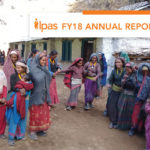
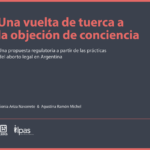
En esta publicación sobre la objeción de conciencia (OC) a la ILE en Argentina, desarrollado por Ipas y la Red de Acceso al Aborto Seguro, Argentina (REDAAS), presentamos una propuesta para regular la OC en el marco de una política pública. Esto lo hacemos de manera empíricamente informada –en particular, relevando las formas que adquiere la OC, y las opiniones de profesionales de la salud sobre las causas e impacto a través de una encuesta y una serie de entrevistas– y con un encuadre conceptual que pone en juego anhelos normativos, necesidades concretas, experiencias cotidianas tanto de los equipos de salud como de las autoridades sanitarias, así como las características estructurales de la formación médica, las condiciones institucionales de los servicios de salud y el ambiente sociopolítico.
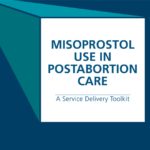
This toolkit is designed to help district or national-level clinicians, facility managers or program managers initiate the use of misoprostol as a medical treatment for incomplete abortion or integrate misoprostol into existing postabortion care services.
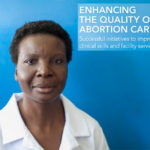
This report looks at initiatives in four countries—Nigeria, Nepal, Ghana and Zambia—where Ipas is working with governments, communities and other partners to provide clinical and programmatic support to providers and health-care facilities.
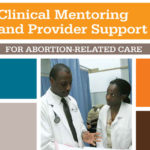
This training manual is for clinical mentors and others providing clinical and programmatic support to health-care providers offering abortion-related care. It includes content, activities and materials to improve their knowledge, attitudes and skills for clinical mentoring and provider support.
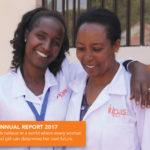
In 2017, Ipas continued to train doctors, midwives and nurses to safely and respectfully perform abortions and provide counseling on contraceptive options. We continued partnering with community-based organizations—experts on the needs of women and girls in their communities—to teach people about their sexual and reproductive rights. We also continued to educate policymakers about the need for safe abortion, to train police and lawyers on how to uphold women’s rights within their legal systems, and to partner with local groups that advocate for sexual and reproductive rights. Learn about our impact in 2017 and read stories and highlights from the year in our annual report.
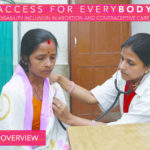
Despite being a considerable percentage of the population, people with disabilities are grossly underserved and neglected by sexual and reproductive health services, particularly those focused on safe abortion and contraceptive care. While donors, sexual and reproductive health program implementers, universities and activists are beginning to examine the needs and rights of people with disabilities, considerable gaps persist in the specific areas of safe abortion and contraceptive care.
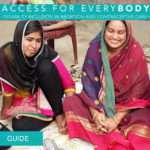
This guide is a resource for program implementers and managers, technical advisors and trainers who design interventions to improve access to abortion and contraceptive care. It offers strategies for improving disability inclusion in policy, service delivery and community engagement interventions and can be adapted to meet the unique needs of each context. Recommendations are based on the human rights model of disability, which includes a “twin-track” approach that promotes the empowerment of people with disabilities by creating disability-specific initiatives and integrating disability inclusion in general programming. Active and meaningful participation of people with disabilities throughout all stages of planning, implementing and evaluating abortion and contraceptive care interventions is a core principle underlying each recommendation included in this guide.
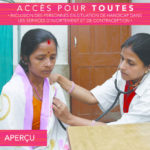
Même si elles représentent un pourcentage considérable de la population, les personnes handicapées1 sont très mal prises en charge et même négligées par les services de santé sexuelle et reproductive, et plus particulièrement par ceux axés sur l’avortement sécurisé et la contraception. Alors que les donateurs, les agents des programmes de santé reproductive, les universités et les activistes commencent à se pencher sérieusement sur les besoins et les droits des personnes en situation de handicap, on ne peut que constater la persistance de lacunes conséquentes dans certains domaines relatifs à l’avortement sécurisé et à la contraception.
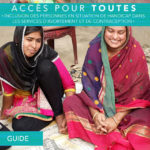
Ce guide est une source d’informations pour tous ceux qui mettent en œuvre les programmes et les supervisent, pour les conseillers techniques et pour les formateurs qui développent des interventions en vue d’améliorer l’accès aux soins d’avortement et à la contraception. Il propose des stratégies visant à améliorer l’inclusion du handicap dans les politiques, la prestation de service et les interventions de mobilisation de la communauté qui peuvent être adaptées de manière à répondre au plus près des besoins spécifiques et uniques de chaque contexte.
About one quarter of women in Bangladesh are denied menstrual regulation (MR) due to advanced gestation. Little is known about whether women denied MR seek abortion elsewhere, self-induce, or continue the pregnancy.
September 28 is the Global Day of Action for Access to Safe and Legal Abortion. But is “safe and legal” enough? Why in the 21st century do we still need a day of action?
For far too long, Malawians’ view of termination of pregnancy has condemned women and girls to either death or permanent disability. These are needless injuries and deaths that can be prevented if only we stop looking at termination of pregnancy as a crime, moral, faith or cultural issue-but rather as public health issue.
In 2005, Ethiopia amended its penal code to expand the circumstances in which abortion is legal. Although the country has expanded access to abortion and postabortion care, the last estimates of abortion incidence date from 2008. This study collected data in 2014 and found that an estimated 620,300 induced abortions were performed in Ethiopia that year. The annual abortion rate was 28 per 1,000 women aged 15–49, an increase from 22 per 1,000 in 2008. The authors conclude that, although the increases in the number of women obtaining legal abortions and postabortion care are consistent with improvements in women’s access to health care, a substantial number of abortions continue to occur outside of health facilities, a reality that must be addressed.
Year: 2016
The February 2016 WHO declaration that congenital Zika virus syndrome constitutes a Public Health Emergency of International Concern reacted to the outbreak of the syndrome in Brazil. But the government’s urging to contain the syndrome, which is associated with microcephaly among newborns, is confounded by lack of reproductive health services. Women with low incomes in particular have little access to such health services. The emergency also illuminates the harm of restrictive abortion legislation, and the potential violation of human rights regarding women’s health. Proposed suggestions for remedying the widespread health-care inequities in Brazil are instructive for other countries where congenital Zika virus syndrome is prevalent.

